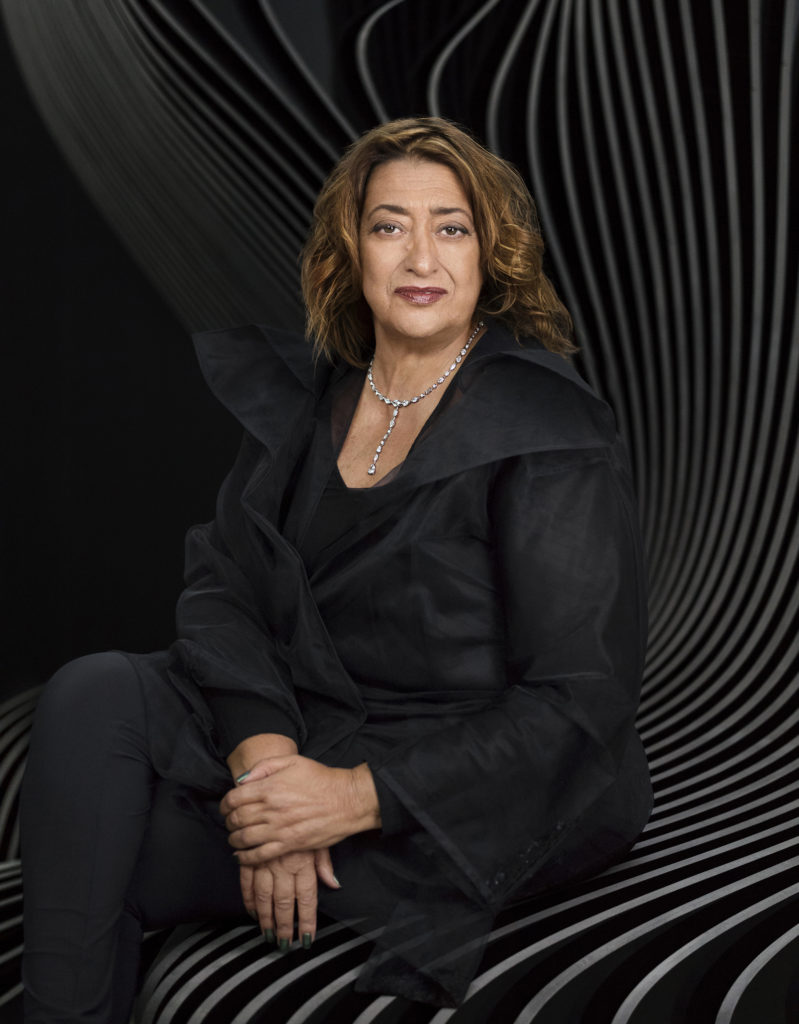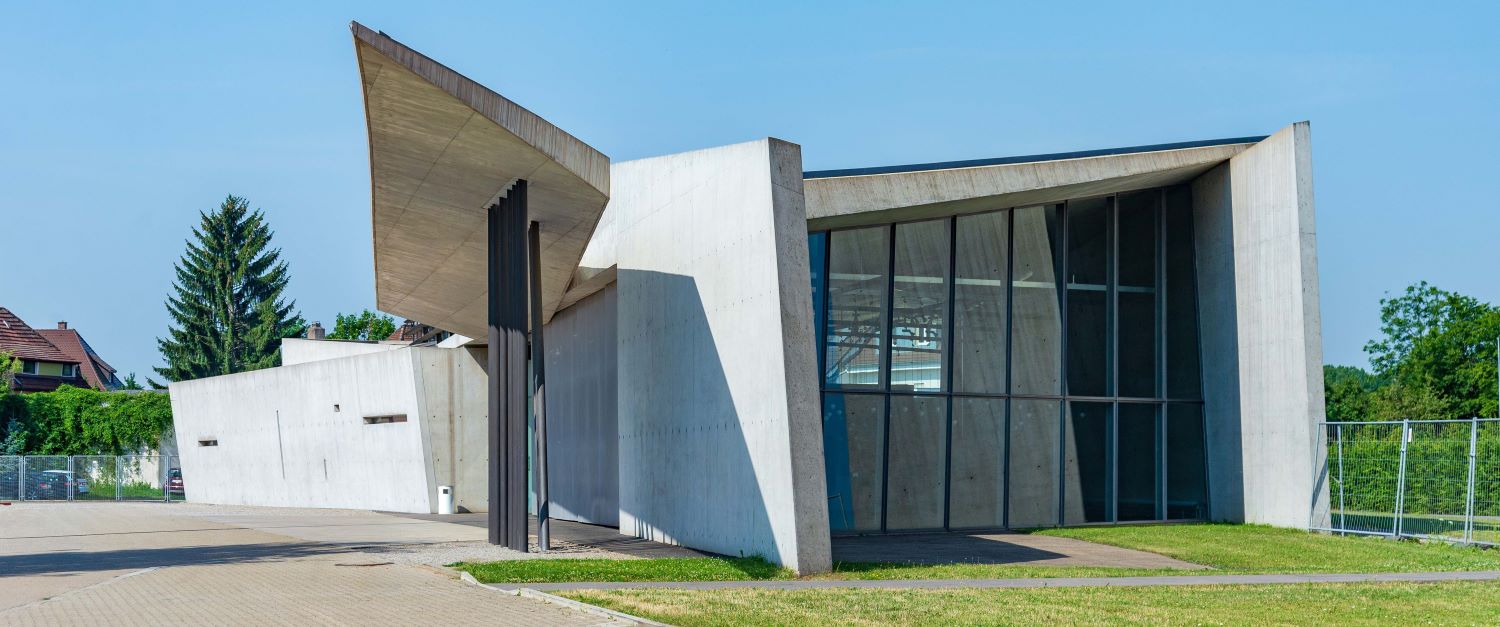Zaha Hadid - the architect who defied form
The world of architecture is filled with iconic figures, but few have left as indelible a mark as Zaha Hadid. More than just a designer, she was a visionary who defied convention, embraced the avant-garde, and shaped the skylines of countless cities with her bold, fluid forms.
Born in Baghdad, Iraq, in 1950, Hadid's journey to architectural stardom was not linear. She studied mathematics at the American University of Beirut before pursuing architecture at London's Architectural Association School of Architecture. This diverse background instilled in her a unique perspective, blending a mathematical mind with an artistic soul.

After establishing her own practice in London in 1980, Hadid quickly gained recognition for her unconventional designs, often characterised by deconstructivism, an architectural movement, which emerged in the 1980s, which challenged traditional notions of order and symmetry. Hadid embraced this philosophy, creating structures that appeared to fragment, distort, and manipulate familiar geometrical shapes.
Unlike the rigid lines and sharp angles that dominated much of 20th-century architecture, Hadid's designs were characterised by a sense of movement and fluidity. This was often achieved through the use of curves, organic shapes, and innovative construction techniques.
Hadid's groundbreaking projects, both completed and conceptual, showcased her distinctive style and unwavering commitment to pushing boundaries. Here are some notable examples:
The Vitra Fire Station, Weil am Rhein, Germany (1993 Pictured below): This early project, a dynamic deconstructivist masterpiece, challenged the traditional boxy form of a fire station. Its fragmented concrete shell and angled rooflines became a symbolic representation of Hadid's architectural philosophy.
The Guangzhou Opera House, Guangzhou, China (2010 Pictured above): This iconic structure resembles two smooth pebbles emerging from the ground, creating a visually stunning landmark for the city. Its complex curves and flowing lines pushed the boundaries of engineering and construction, becoming a testament to Hadid's innovative spirit.
The Heydar Aliyev Center, Baku, Azerbaijan (2012): This fluid, futuristic complex houses a museum, conference centre, and auditorium. Its undulating curves and intertwined forms seem to defy gravity, creating a structure that is both visually captivating and functionally diverse.
Beyond the aesthetics, Hadid's work embodied a deeper purpose. She aimed to create spaces that interacted with their environment, promoting social interaction and encouraging movement within the structures. This approach is evident in projects like the MAXXI Museum in Rome, Italy and the London Aquatics Centre, both showcasing how architecture can enhance human experience beyond mere functionality.
Throughout her career, Hadid received numerous accolades, including becoming the first woman to be awarded the prestigious Pritzker Architecture Prize in 2004, often referred to as the "Nobel Prize of architecture." This recognition solidified her position as a leading figure in the field, inspiring countless architects and designers around the world.
Sadly, Zaha Hadid passed away in 2016, leaving behind a legacy that continues to shape the future of architecture. Her bold designs and unwavering commitment to innovation continue to inspire and challenge architects today. Her work serves as a reminder that the built environment can be more than just shelter - it can be a canvas for creativity, a platform for social interaction, and a symbol of progress.
A lasting legacy for women in architecture
The impact of Zaha Hadid extends far beyond the iconic structures she designed. Her influence can be seen in the rise of women in architecture. Hadid's success paved the way for other female architects, demonstrating that women can be leaders in this traditionally male-dominated field.
While not as prominent as it was in the late 20th century, deconstructivism continues to influence contemporary architecture, with some architects drawing inspiration from Hadid's pioneering work.
Hadid's designs often pushed the boundaries of what was possible with existing construction techniques. This in turn, inspired architects and engineers to explore and develop new technologies and materials to realise her visionary ideas. This spirit of innovation continues to drive the construction industry forward.
Hadid's influence transcends national borders. While her large-scale projects garner international recognition, her impact can also be felt at a local level. Several cities, including her hometown of Baghdad, are working to preserve her legacy through museums and exhibitions: These initiatives showcase her work, drawings, and models, offering the public a deeper understanding of her design process and philosophy.
Universities and architectural schools are also incorporating studies of Hadid's work into their curriculum, inspiring future generations of architects. As a testament to her skills, existing Hadid structures are being carefully maintained and restored to ensure their longevity as cultural landmarks.
These efforts highlight the multifaceted nature of Hadid's legacy. She was not just an architect who designed buildings - she was a visionary who redefined the possibilities of space and form, leaving an indelible mark on the world around us.
Building on the Legacy
While Zaha Hadid is no longer with us, her work continues to inspire architects and designers around the world with her bold disregard for traditional geometries. While aesthetics remain important, architects today are increasingly emphasising the link between form and function, ensuring that their designs not only look good but also provide comfortable, engaging experiences for users.
Zaha Hadid was a true pioneer who challenged the status quo and redefined the landscape of architecture. Her legacy extends beyond the iconic buildings she designed, inspiring future generations to push boundaries, embrace innovation, and create structures that not only shelter but also inspire. As the architectural landscape continues to evolve, Hadid's influence will undoubtedly continue to shape the future of the built environment for years to come.
Sources of Information:
1. Introduction:
- Zaha Hadid's biography: https://en.wikipedia.org/wiki/Zaha_Hadid
- Deconstructivism in architecture: https://www.britannica.com/summary/deconstruction
2. Notable projects:
- The Vitra Fire Station: https://www.archdaily.com/785760/ad-classics-vitra-fire-station-zaha-hadid-weil-am-rhein-germany
- The Guangzhou Opera House: https://www.archdaily.com/74541/guangzhou-opera-house-zaha-hadid
- The Heydar Aliyev Center: https://www.archdaily.com/448774/heydar-aliyev-center-zaha-hadid-architects/57c44c17e58ece4277000289-heydar-aliyev-center-zaha-hadid-architects-ground-floor-plan
- MAXXI Museum: https://www.zaha-hadid.com/architecture/maxxi/
- London Aquatics Centre: https://en.wikipedia.org/wiki/London_Aquatics_Centre
3. Recognition and Legacy:
- Pritzker Architecture Prize: https://www.pritzkerprize.com/
- Impact on women in architecture: https://www.archdaily.com/office/zaha-hadid-architects
4. Beyond the Icons:
- Educational programs: https://www.designboom.com/tag/zaha-hadid/
5. Looking Forward:
- Trends in contemporary architecture: https://www.royalacademy.org.uk/page/ra-architecture-awards-2023
Additional Resources:
- Zaha Hadid Architects official website: https://www.zaha-hadid.com/
- The Pritzker Architecture Prize website: https://www.pritzkerprize.com/
- Arch Daily - Architecture news and information website: https://www.archdaily.com/

Additional Articles

Why everyone has a favourite skip and what it says about you
In construction, there are two universal truths – tea, of course, is essential and believe it or not, everyone - whether they are prepared to admit it - has a favourite skip. It may sound strange,...
Read moreThe cultural significance of the bacon roll in UK construction
Walk onto any construction site in the UK at 7:30am and you’ll quickly discover that the most important piece of equipment isn’t a digger, a drill or a laser level. It’s a humble, foil-wrapped,...
Read more

Check out the odd things unearthed on construction sites
Dig deep enough on a construction site and you might be amazed at what you find. In fact, if there is anywhere destined to uncover hidden treasures, you are in the right place. Large-scale ground...
Read more